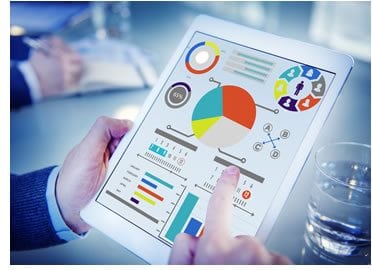
How to Set up a Corporate Sustainability Program Part 4: Choosing a Sustainability Framework
Adopting a sustainability framework is one of the single most important steps your organisation can take on its journey towards sustainability. Not only will you benefit from a well thought out system to follow, you’ll also get a thorough education as you implement the framework’s standards.
How do you define and measure sustainability? What do you need to do to make your organisation sustainable? And once you've begun the journey towards sustainability how will you know when you've arrived?
Sustainability Frameworks and their reporting systems exist to take the fuzziness out of answering these questions. They provide clear standards by which to assess your organisation's impact, to set goals, measure progress and report.
Background to sustainability reporting
Sustainability Reporting can be traced back to the chemical manufacturing industry in the 1980s. At the time serious image problems plagued the industry after a run of high profile industrial accidents. The most memorable of these was the 1984 Union Carbide disaster in Bhopal, India. Voluntary reporting began as a move towards improving transparency and public relations. Around the same time a number of socially and environmentally aware SMEs, such as Body Shop, Patagonia and Ben and Jerry's began their own initiatives to communicate their impact. Early reports took the form of simple narratives included in the Chairman's and CEO's letters in annual financial reports. But as environmental and social concerns found their way into the wider corporate world a number of initiatives began to help organisations focus their energies and measure progress in areas that counted most.How do sustainability frameworks help?
Some important roles are:- To define sustainability and organise it into areas of focus: carbon emissions, water consumption, profitability, safety, social impact etc.;
- Create standard methodologies for assessing and reporting impact;
- To give credibility to reporting by giving organisations widely recognised standards to measure themselves against;
- Education and Training;
- To create transparency around corporate sustainability by introducing the same rigour to environmental and social reporting as seen in financial reporting.
- Should we be focusing on cleaning up our supply chain, or reducing paper and energy consumption in the office?
- As far as sustainability goes, what will give us the biggest return on investment, reducing the carbon emissions on product shipping or installing solar powered hot water in our factory?
- Which is more relevant to our sector, waste reduction or water consumption?
- To what extent have our total carbon emissions changed over the last 12 months?
What are the most widely used and recognised sustainability frameworks?
Some of the best known frameworks at the time of writing are: CDP (formerly The Carbon Disclosure Project) CDP’s main focus is to provide transparency to investors around issues on climate change and conservation of natural resources such as water. It offers a framework for signatories to report on carbon emissions, water usage and aspects of supply chain quality. The Global Reporting Initiative (GRI) aims to provide transparency to all stakeholders on a much broader range of issues than CDP. The GRI concept of sustainability is organised into six categories:- Economic,
- Environmental,
- Labour practices and decent work,
- Human rights,
- Society,
- Product Responsibility.
